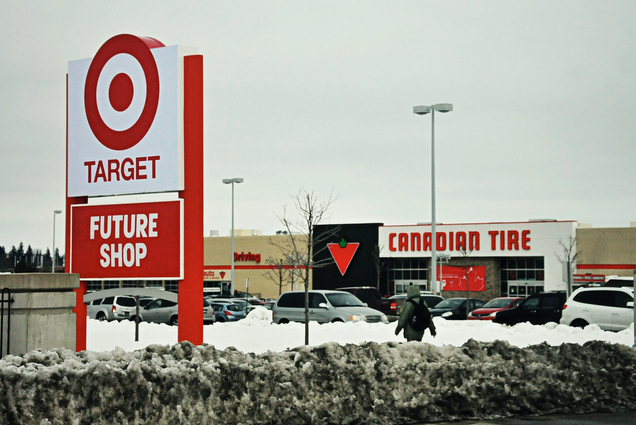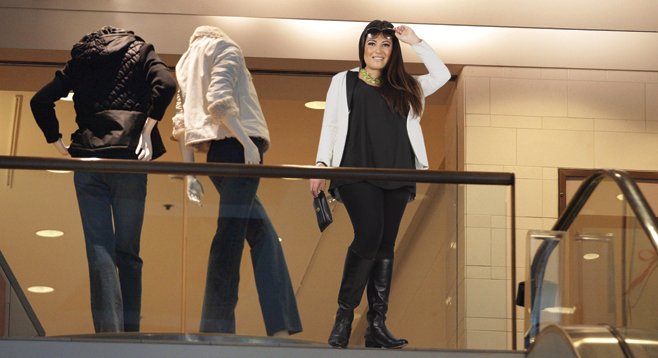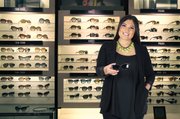Selling is service.
That mantra is engrained in my mind as I climb the treacherous retail employee stairs, reading the large motivational signs; it prepares me for a long shift. I enter the sleek Nordstrom in North County and leave Jessica Swenke behind. I am now employee number 9138934 — a customer-service zombie in trendy attire.
As I stroll through Cosmetics to get to my department, Accessories and Sunglasses, I am dreading the prospect of checking my sales figures. Commission sounded fabulous during three intense days of training, but when customer returns count against employees, you can grow to despise Nordstrom’s generous policy.
I find 9138934 and see that I am at negative $550. “Damn,” I mutter. “It must’ve been those Gucci sunglasses.” At a 9 percent commission rate, I will lose about $50 on my next paycheck — all because of a return. We Nordstrom salespeople call it working for free. I will have to hustle $550 worth of scarves, hats, and sunglasses just to break even.
Yeah, it happens all too often.
I pace around the sunglass bay, looking for my next sale.
An edgy-looking older male approaches. “I need to return these,” he says.
I recognize the Chanel 330s. They’re called Glam Magics, big sellers at any luxury retailer. These $330 shades look as if they’ve gone through a washing machine and then were mauled by a pit bull. Return them, really?
“I got these for my girlfriend’s birthday a month ago, and my dog chewed them up before I could give them to her. Can I get a new pair?”
This sounds rehearsed, which is normal at Nordies. We salespeople have to just stand there and allow people to come up with the strangest lies so they can get money back for something they either regret buying or stole.
I have two choices: I can take back the damaged merchandise and be chewed out by my boss, or deny the return and be attacked by the customer. Decisions, decisions…
The only rule in the short Nordstrom employee handbook? Use your best judgment.
Always turn returns into sales. Another phrase embedded in my mind from training.
“Sir, I am so sorry,” I say, “but I cannot take these glasses back, due to the scratches on the lenses and condition of the frame. Let’s check out some of our new sunglasses and we can find another pair for your girlfriend.” This tactic is a bit of a stretch. On the other hand, I have nothing to lose.
“I thought this was Nordstrom,” the customer complains. “This is bullshit.” He grabs the case and struts off.
Well, nothing gained, nothing lost. But now I need to hustle so I can make some money.
My department manager appears. Kathy (not her real name) seems to be on a power trip.
“Okay, girls!” she says. “Our units per transactions need help right now! If they’re checking out plastic-frame sunglasses, have them fall in love with some aviators. And grab a scarf-and-hat combo! Everyone needs these items.”
She must be joking. Look around…we are in Escondido, in a dead store, and to top it off, there’s a recession. My sales skills are good, but that won’t mean much to the average customer.
In retail, nodding and going along keep the higher-ups off your back. “Sounds great, Kathy,” I say. “You’re totally right.” Not. I may be a sheep in the corporate herd, but I will never drink the Nordstrom Kool-Aid.
I switch over to scarves and hats, hoping for luck there, and maybe a commission or two, but there is a hefty pile of returns from customer service, waiting for me to put them back out on the floor.
“What do you think about this scarf?” I ask Ash, another sales associate. “Doesn’t it smell like perfume? We should take it to alterations to get steamed. That’ll take out the smell.” I hoist the obnoxious purple wrap that someone probably wore once and returned. In my mind’s eye, I see Grandma all gussied up. Must’ve been bingo night at the casino.
“It’s disgusting that we have to put these worn returns back on the floor,” Ash says.
A classy older woman walks through the second-floor opening in the mall, and we’re suddenly like lions spotting their prey — this store is so dead, most sales associates usually spend their time trying to sell merch to other employees. But if it looks as if a customer has money, we jump all over the sale.
Ding-ding-ding. I am the winner. Everyone gives me the stink eye as the woman comes toward me.
“Hi,” I say. “Welcome. How are you doing tonight?” Closing is at 9:00 p.m., and I am still in the negative, and I am going for the exactly right level of friendly. I need to make this sale.
“I’m not shopping,” the lady says. “I just need to get this belt fixed. It’s falling apart. I got it ’bout ten years ago.”
Before I can think of how to respond, the old gal beats me to it.
“Nordstrom should stand behind their products,” she says. “This belt is falling apart. It should not be falling apart.”
I want to scream, “Nothing lasts forever!” but being a customer-service-trained individual, I know only too well that I can’t be that real.
So I pick up a phone and dial the night manager. I can see the relieved faces of my coworkers — by pure luck, they’ve escaped being stuck with That Lady with the Crazy Return.
When the manager arrives, I introduce her to the customer, then get as far away from the situation as possible. But before heading back onto the floor, I decide to check the department’s sales numbers for the day. If I use employee numbers, I can see how my teammates have done, and even the boss. This isn’t snooping, only normal practice at Nordies. It keeps the competitive atmosphere thriving.
Me: sales $0.00, returns $550.
Ash: sales $475, returns $35.
Sourced from sandiegoreader.com



























Recent Comments